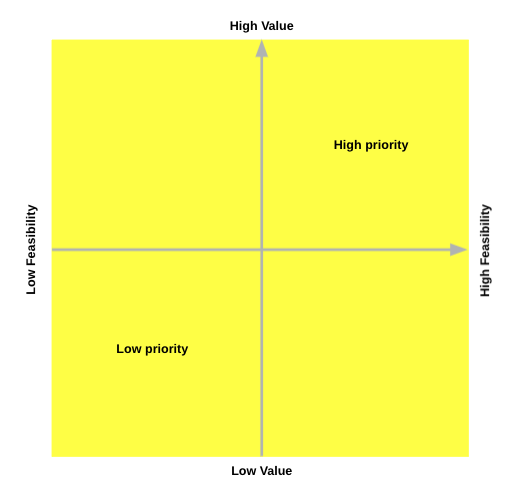By: Luke Gallimore & Gabriel Valmonte
Part of our transportation and logistics thought leadership series
The transportation and logistics industry is broad and deep in its complexity. Often, companies looking at exploring technology to find potential incremental business value find it daunting not only in terms of scale but most especially the cost and the uncertainty of a return on investment. How do you target the right problems and find the right solutions? This article provides an actionable approach that helps companies invest in digital incrementally and kick-start larger transformations.
* * *
Over the years, technology has played an ever-increasing role in improving efficiencies in individual operational aspects such as personnel, vehicle dispatch, warehousing, among others. However, even industry players deem that tech adoption is moving at a slow pace. According to a study by the Journal of Commerce [1], more than half said the industry was “slow to change, but improving.” We read this as ‘must do better’.
Based on our research and extensive client interactions, we identified two major reasons why companies in transport and logistics are hesitant to push the boundaries in digital.
- the perceived high costs involved in digital development
- the uncertainty if this technology will yield a return on investment.
These are very valid concerns. Many companies spend too much money on technology which has little or no positive impact on the bottom line of the business. However, the good news is there is an approach that allows you to explore technology without breaking the bank while at the same time ensuring a viable business value in the near term.
That is the Minimum Viable Product (MVP) approach.
Great Things Start from Small Beginnings
The MVP approach, in a nutshell, helps define the minimum investment required to determine if a tech solution is viable and can be successfully scaled. It is an approach that balances investment and risk in a company’s digital undertaking.
Instead of taking on a large section of the business through a full-blown digital transformation, the MVP approach allows companies to take on the most relevant challenges and tackle them in a controlled, bite-size and manageable manner. It allows for the creation of solutions that can have an immediate impact on the organization in direct response to the identified business problems. MVPs can be thoroughly tested and recalibrated before eventually scaling as required for full operational efficiency. Therefore, they effectively reduce the risk of failure and financial setbacks.
The MVP approach leads to three important business benefits.
- Speed – It allows for quick technology implementation as it should deliver the required business value with the minimal feature set possible.
- Cost – This in turn enables lean value creation where the MVP delivers commercial impact with the minimum investment needed. By veering away from non-critical features, wastage of time and money are limited, effectively reducing risk even in the case of failure.
- Reassurance – An MVP provides a solid foundation for technology that is feasible and usable in a live context and environment. It gives business leaders the confidence to build on it and scale as they see fit.
The next question is “How do we know what business areas or challenges to apply the MVP approach with?” Here’s how we answer that.
MVPs are defined by a Discovery Process
With the MVP approach, business leaders do not go in blindly and randomly choose an area to work on. Instead, you follow a discovery process that identifies key issues and methodically works to define solutions. Product discovery is the process of getting from a problem to a solution [2].
Our solution discovery & product strategy expert, Luke Gallimore, outlines the 4 essential steps of the discovery process [3]:
1. Problem framing — It starts with understanding business problems you’d like to address. It may be one or quite a few. On top of that include what success for a solution would look like to the business.
Example: For a transportation company, a business problem may be that buses are not being dispatched in a timely fashion due to manual processes during peaks. A requirement of the solution may be that some or all of the processes of dispatch should be automated to reduce the risk of human error.
2. Roadmap planning — The next step is to prioritise the business problems identified. Which will take precedence is based on expected business and user value and the expected technical complexity.

| Roadmaps should be organised and prioritised according to the value and feasibility of the ideas on it. |
Example: For a cargo company, tackling the challenge of ensuring sufficient shipping supply for transporting cargo may be more important than personnel shift management in warehouses. Solving the prior may be more complex but being a core business area it can be more impactful.
3. Ideation & prototyping — After identifying the important business challenges, the business leadership team composed of individuals from cross-functional areas has to generate solution ideas quickly that leads to the development of prototypes.
Example: Going back to the transportation company with the timely bus dispatching challenge, an idea may be to create a mobile system that predicts peak hours and locations and enable the automatic assignment of vehicle units and drivers to key areas.
For the cargo company dealing with shipping supply challenges, they may opt to develop a system that can generate estimated demand volumes to allow efficient ship allocation.
4. Solution testing — Once you have an idea that balances value creation with technical complexity, you need to test and validate the prototype initially developed against the problem to see if it is worth pursuing further. Test with target actual users and real data where possible to determine if it is worthwhile.
Example: A design prototype of the mobile dispatching system can be tested with a select group of drivers for a certain period and get their feedback on its usefulness and perceived benefits.
The cargo company, on the other hand, can test the prototype system with live data over a smaller service area covering fewer locations and units. Allowing for a controlled and manageable live testing environment.
How do you decide which ideas are the ones worth pursuing?
Once a set of workable rough solutions are on hand, they just need to pass the validation criteria before the prototypes can go for further development. This is meant to ensure that we will be working only on the initiatives that will generate the most value. And at this point, we have to ask the following questions:
- What is the perceived value? Will users find value in it and does it obviously address the initial problem?
- Is it usable? — If indeed valuable, will the users find the technology easy to use?
- What is the technical feasibility? — Given resources and technical capabilities, can we build this solution to the required standard, on time?
- What is the commercial viability? — will this solution, if used, provide the right kind of impact on the business?
If it ticks all the boxes, then this is the technology that you can build an MVP solution for. It is feasible and, most importantly, valuable.
There is one critical component we have not yet mentioned. Conducting the discovery process without the guidance of a product strategy can lead to short-sighted fragmented digital initiatives that may end up detrimental in the long run. You need to have a north star.
A Good discovery process is rooted in a good Product Strategy
A product strategy sets the context for decision making and guides teams throughout the discovery process to make the right choices.
A product strategy may be goal-based, for example, improving delivery times by x% for logistics companies or increasing passenger loyalty by x%. Such goals are useful measures but may lead to short-sighted decisions.
There is an important distinction between goals and values.
- A Value is an ongoing and lifelong process that can never be ‘completed’ or ‘ticked off’ a list. Instead, it provides direction on how you act and behave e.g. be brave
- Goal: A finite, short-term object of satisfaction that can be ‘completed’ or ‘ticked off’ a list. Goals are really helpful for gaining quick benefits and e.g. visit the dentist every year
The difference between these two ways of thinking can have a huge impact on how you make decisions in digital products, especially during ideation in discovery. Values are far more flexible and mean that you can adapt more readily to changing situations and new information. You can easily interpret values, but you cannot so easily interpret goals.
How does this influence the discovery process and decision making in digital? Let’s take a look at a transport company going through the process but guided by different approaches:
- Goal-based product strategy: Company A has a goal to create a new loyalty program to increase retention. The discovery process has a narrow scope and will inevitably lead to, for example, a mobile loyalty app MVP that gives points for frequent service users. That could work, but Company A did not give themselves a chance to innovate. It was a self-fulfilling prophecy and the process of discovery was constrained by the goal.
- Values-based strategy: Company B has the product value ‘convenience’ and is looking to improve the experience of customers using their transportation services. The discovery process is suddenly much wider and this means that the team will come up with a much broader range of potential solutions which are more innovative and which are informed by evidence. Company B will disrupt Company A.
We have seen time and time again that when a values-based product strategy is adopted in the MVP approach, that more business value is created, at a lower cost and faster.
Conclusion
Digital transformation for large transportation & logistics companies is definitely an achievable goal. Innovation and digital initiatives that can revolutionize your company, if not the industry, shouldn’t be held back by uncertainties around technological viability, development cost, and return on investment. The MVP approach will enable you to address key business challenges without the operational and financial risk. It gives you the opportunity to explore, create, and scale digital initiatives according to your capacity and capabilities. This can pave the way for a culture of innovation to be part of your organization.
There are three steps to choosing the best digital investment to kick-star transformation:
- Create a sound Values-based Product Strategy
- Lead a Solution Discovery Process, identifying important problems and possible solutions
- Development of an impactful and scalable Minimum Viable Product (Solution) built on minimal costs but powered with the most critical features addressing the defined business challenges.
Read more about our approach:
Luke Gallimore, How to Build a Healthy Product Roadmap: Foundational Principles, 2021
Luke Gallimore, How to Define a Product Strategy: The Value-Based Approach, 2021
To book a free one-day problem framing workshop to get your digital transformation started get in touch today
Read more insights and see some of our works on the Transportation and Logistics vertical here
Meet our Expert

Luke Gallimore
Since joining Monstarlab, Luke has driven success with a range of clients from global enterprises to startups across many verticals. Luke was the ‘founding’ product manager during the incubation of UK-based Fintech Startup Claro in 2019 and has worked with global brands such as Avon, Nord Anglia Education and Krispy Kreme to support their journey to becoming digital-first and disruptive businesses.
Notes:
[1] The Journal of Commerce Online, Industry skeptical of pace of logistics tech adoption, 2017
[2][3] Luke Gallimore, How to Build a Healthy Product Roadmap: Foundational Principles, 2021
[4] Luke Gallimore, How to Define a Product Strategy: The Value-Based Approach, 2021


